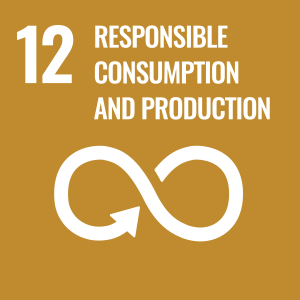
Dr Abdolreza Roshani
Academic and research departments
Centre of Digital Economy, Centre for Business Analytics in Practice.About
Biography
Abdolreza Roshani is a Lecturer (Assistant Professor) in Business Analytics at Surrey Business School, where he also serves as the UG Program Director for the BSc in Business Management with Business Analytics. He is a member of the Centre for Business Analytics in Practice at Surrey Business School, a Fellow of the Sustainability Institute, and a Fellow of the Higher Education Academy (FHEA). His background also includes advanced research at Genova University and the Centre for Digital Economy (CoDE) within Surrey Business School, as well as time spent as a visiting scholar at Kettering University (Michigan).
Abdolreza has made significant contributions to academia, publishing in prestigious journals such as the International Journal of Production Research, Journal of Cleaner Production, Annals of Operations Research, Journal of Manufacturing Systems, International Journal of Advanced Manufacturing Technology, and International Journal of Computer Integrated Manufacturing. He is also committed to teaching a range of management and engineering modules across undergraduate and postgraduate levels. Additionally, Abdolreza works as a reviewer for many reputable academic journals and serves as an academic editor and guest editor.
He played an active role in the RAMONA Project, which aimed to develop effective techniques for detecting disruptions, analysing them accurately, and creating responsive strategies for reconfigured manufacturing. This collaborative project involved experts from the University of Warwick, the University of Reading, and the University of Surrey, and was funded by the EPSRC with over £1 million to enhance the resilience of additive manufacturing. The project was led by Professor Greg Gibbons from the University of Warwick, with contributions from Surrey’s Professor Glenn Parry and Dr Abdolreza Roshani.
I am currently accepting applications from prospective PhD students in the fields of Business Analytics and resilient supply chain design. Please feel free to email me your CV.
ResearchResearch interests
Operations Research, Optimisation, Supply Chain Management, Business Analytics
Research interests
Operations Research, Optimisation, Supply Chain Management, Business Analytics
Teaching
MANM528 Data Mining and Text Analytics (Link)
Sustainable development goals
My research interests are related to the following:





Publications
Lu, C., Roshani, A., Parry, G. and Emrouznejad, A., 2025. Multi-level risk assessment in additive manufacturing systems: a multiplicative nonparametric approach. International Journal of Production Research, pp.1-20.
Pasha, J., Li, B., Elmi, Z., Fathollahi-Fard, A.M., Lau, Y.Y., Roshani, A., Kawasaki, T. and Dulebenets, M.A., 2024. Electric Vehicle Scheduling: State of the Art, Critical Challenges, and Future Research Opportunities. Journal of Industrial Information Integration, p.100561.
Abdolreza, R., Parry, G. and Davies, P., 2023. Designing resilient and energy-efficient additive manufacturing enabled supply chains. IET Digital Library
Roshani, A., Paolucci, M., Giglio, D., Demartini, M., Tonelli, F. and Dulebenets, M.A., 2023. The capacitated lot-sizing and energy-efficient single machine scheduling problem with sequence-dependent setup times and costs in a closed-loop supply chain network. Annals of Operations Research, 321(1-2), pp.469-505.
Singh, P., Pasha, J., Khorram-Manesh, A., Goniewicz, K., Roshani, A. and Dulebenets, M.A., 2021. A Holistic Analysis of Train-Vehicle Accidents at Highway-Rail Grade Crossings in Florida. Sustainability, 13(16), p.8842.
Roshani, A., Paolucci, M., Giglio, D. and Tonelli, F., 2021. A hybrid adaptive variable neighbourhood search approach for multi-sided assembly line balancing problem to minimise the cycle time. International Journal of Production Research, 59(12), pp.3696-3721.
Esfandyari, A. and Roshani, A., 2020. Assembly line balancing problem with skilled and unskilled workers: The advantages of considering multi-manned workstations. Journal of Industrial and Systems Engineering, 13(Special issue: 16th International Industrial Engineering Conference), pp.66-77.
Roshani, A. and Giglio, D., 2020. A tabu search algorithm for the cost-oriented multi-manned assembly line balancing problem. International Journal of Industrial Engineering & Production Research, 31(2), pp.189-202.
Giglio, D., Paolucci, M. and Roshani, A., 2017. Integrated lot sizing and energy-efficient job shop scheduling problem in manufacturing/remanufacturing systems. Journal of cleaner production, 148, pp.624-641.
Roshani, A. and Nezami, F.G., 2017. Mixed-model multi-manned assembly line balancing problem: a mathematical model and a simulated annealing approach. Assembly Automation.
Giglio, D., Paolucci, M., Roshani, A. and Tonelli, F., 2017. Multi-manned assembly line balancing problem with skilled workers: a new mathematical formulation. IFAC-PapersOnLine, 50(1), pp.1211-1216.
Roshani, A., Giglio, D. and Paolucci, M., 2017. A relax-and-fix heuristic approach for the capacitated dynamic lot sizing problem in integrated manufacturing/remanufacturing systems. IFAC-PapersOnLine, 50(1), pp.9008-9013.
Roshani, A. and Giglio, D., 2017. Simulated annealing algorithms for the multi-manned assembly line balancing problem: minimising cycle time. International Journal of Production Research, 55(10), pp.2731-2751.
Roshani, A., Giglio, D. and Paolucci, M., 2016. A simulated annealing approach for the capacitated dynamic lot sizing problem in a closed remanufacturing system. IFAC-PapersOnLine, 49(12), pp.1496-1501.
Roshani, A. and Giglio, D., 2015. A mathematical programming formulation for cost-oriented multi-manned assembly line balancing problem. IFAC-PapersOnLine, 48(3), pp.2293-2298.
Roshani, A. and Giglio, D., 2015. A simulated annealing approach for multi-manned assembly line balancing problem type II. IFAC-PapersOnLine, 48(3), pp.2299-2304.
Salehi, M., Fattahi, P., Roshani, A. and Zahiri, J., 2013. Multi-criteria sequencing problem in mixed-model synchronous assembly lines. The International Journal of Advanced Manufacturing Technology, 67(1), pp.983-993.
Roshani, A., Roshani, A., Roshani, A., Salehi, M. and Esfandyari, A., 2013. A simulated annealing algorithm for multi-manned assembly line balancing problem. Journal of Manufacturing Systems, 32(1), pp.238-247.
Roshani, A., Fattahi, P., Roshani, A., Salehi, M. and Roshani, A., 2012. Cost-oriented two-sided assembly line balancing problem: A simulated annealing approach. International Journal of Computer Integrated Manufacturing, 25(8), pp.689-715.
Fattahi, P., Beitollahi Tavakoli, N., Fathollah, M., Roshani, A. and Salehi, M., 2012. Sequencing mixed-model assembly lines by considering feeding lines. The International Journal of Advanced Manufacturing Technology, 61(5), pp.677-690.
Fattahi, P., Manesh, M.S. and Roshani, A., 2012. A new solution seed for job shop scheduling problem. In Applied Mechanics and Materials (Vol. 110, pp. 3899-3905). Trans Tech Publications Ltd.
Fattahi, P., Roshani, A. and Roshani, A., 2011. A mathematical model and ant colony algorithm for multi-manned assembly line balancing problem. The International Journal of Advanced Manufacturing Technology, 53(1), pp.363-378.